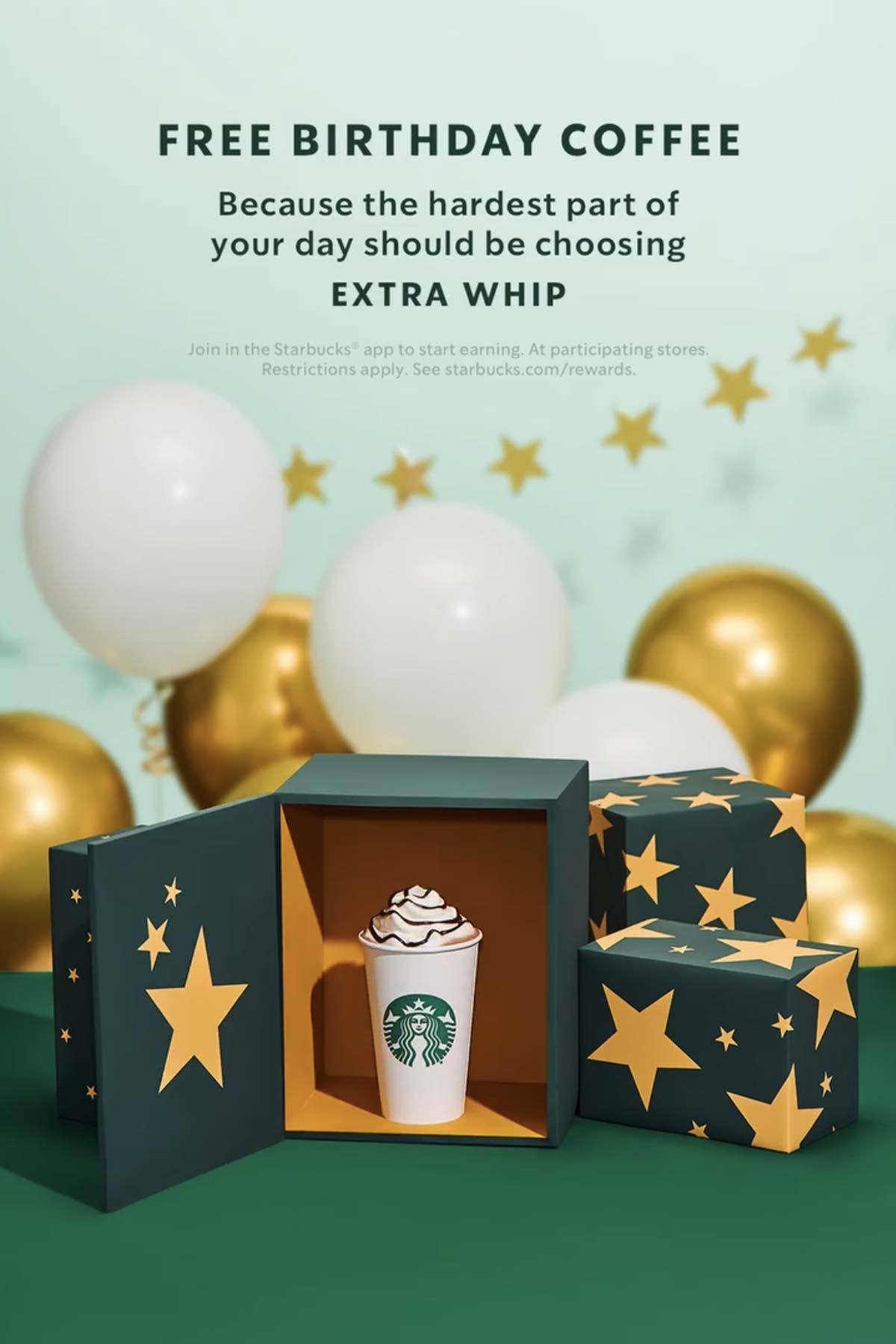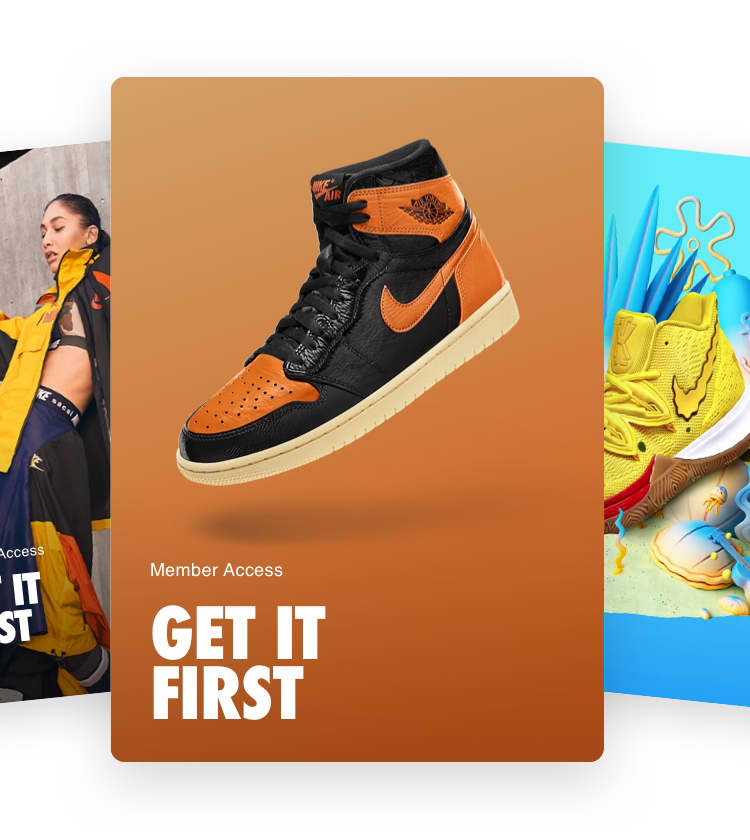
What is your current returning customer rate?
Want to close the gap?
Customer loyalty is one of the most valuable assets for any business, and loyalty programs serve as a powerful mechanism to nurture and retain it. These programs, filled with enticing offers and exclusive benefits, aim to foster lasting relationships with customers and drive repeat purchases. But how do you measure the true success of these initiatives?
This is where the concept of redemption rates comes into play. A loyalty program might seem successful if customers are earning points or engaging with promotions, but low redemption rates could signal deeper issues. Are customers finding the rewards appealing? Do they understand how to redeem their points? Are the incentives aligned with their preferences? Redemption rates offer critical insights into these questions, acting as a tangible indicator of how effectively your program meets customer expectations.
In this article, we’ll explore the pivotal role redemption rates play in marketing, how they reflect the performance of loyalty programs and promotions, and actionable strategies to improve them. By the end, you’ll see why a high redemption rate isn’t just a metric — it’s a testament to customer engagement, satisfaction, and program success.
Let’s dive in!
What is the Redemption Rate?
The redemption rate, also known as the utilization rate, measures the percentage of rewards, offers, or loyalty points redeemed by customers compared to what they earn or are offered. It serves as a key performance indicator (KPI) for loyalty programs and marketing campaigns, offering insights into customer engagement and program effectiveness.
Why Redemption Rate Matters
- Measures Program Success: A high redemption rate suggests that rewards are attractive and effectively driving customer engagement.
- Identifies Areas for Improvement: A low rate may indicate issues like unappealing rewards, a complicated redemption process, or a lack of awareness.
- Balances Cost and Customer Satisfaction: While low redemption rates signal underperformance, excessively high rates can hurt profitability if rewards are too generous.
- Drives Strategic Adjustments: By tracking redemption rates, businesses can refine their approach to maximize both customer value and program efficiency.
Next, we’ll explore how to calculate your redemption rate and use it to improve your loyalty program’s effectiveness.Calculating Redemption RatesCalculating your redemption rate is straightforward, but its implications are invaluable for understanding the effectiveness of your loyalty program or promotional campaign.To find your redemption rate, use this simple formula:
Redemption Rate = (Number of Rewards Redeemed ÷ Total Rewards Issued) × 100
For example, if you issued 5,000 rewards in a month and customers redeemed 1,000 of them, the redemption rate would be:
(1,000 ÷ 5,000) × 100 = 20%
This metric gives you a clear understanding of how many rewards are being utilized compared to the total issued. Learning to calculate your redemption rates is essential for evaluating program success. A high redemption rate typically signals strong customer engagement and satisfaction with the program, while a low rate might point to inefficiencies or gaps in your strategy.
Calculating your redemption rate is the easy part. Improving it, however, can require more effort. Strategies like offering digital rewards, ensuring a seamless redemption process, and tailoring incentives to customer preferences can significantly impact how effectively your program drives engagement.
In the next sections, we’ll explore actionable steps to boost redemption rates and maximize the value of your loyalty initiatives. But first, it’s worth noting that the average redemption rate for rewards programs hovers around 13.67%, giving you a benchmark to compare your results.
Key Factors Affecting Redemption Rate
The success of a loyalty program isn’t just about offering rewards — it’s about ensuring customers actually redeem them. Several key factors influence redemption rates, from the attractiveness of rewards to the simplicity of the redemption process. If customers find the rewards valuable and easy to claim, they’re more likely to engage. On the other hand, complex rules, lack of personalization, or poor communication can lead to low redemption rates and missed opportunities.
Understanding these factors is essential for optimizing your program and driving customer participation. Let’s explore the key elements that shape redemption rates and how you can leverage them to maximize engagement.
Program Design and Industry
Loyalty program design heavily influences redemption rates. Simple structures, like earning a reward for a set number of points (e.g., 500 points for $10 off), often see higher redemption rates because goals are clear and easy to achieve. Complex systems or high-point thresholds, however, can discourage engagement.
Industry also matters. Retail programs tend to have higher redemption rates due to frequent, smaller rewards like discounts, while travel programs may see lower rates as customers save points for bigger rewards like free flights. Adapting your program to your industry and keeping redemption straightforward can significantly boost engagement and utilization.
Variety of Rewards
Offering a variety of rewards can significantly impact redemption rates by catering to diverse customer preferences. Programs with a broad reward catalog — spanning vouchers, products, and experiences — often see redemption rates distributed across different options. This variety allows customers to choose what resonates with them most, enhancing overall engagement.
However, lower redemption rates on certain rewards can occur as customers strategically save points for higher-value items. Some may accumulate points over time for exclusive rewards, while others prefer redeeming smaller, easily attainable options. Striking a balance in reward offerings ensures that all customers, regardless of their preferences or point accumulation habits, find value in your loyalty program.
User Engagement
User engagement plays a crucial role in driving redemption rates. Actively engaged customers are more likely to redeem rewards, as they stay connected with the program and understand its value. On the other hand, low engagement often leads to unused points and lower redemption rates.
Effective communication is key to boosting engagement. Regular reminders, promotions, and personalized offers keep the program top of mind and motivate users to take action. Highlighting the benefits of redeeming points and making the process simple can further encourage participation, ensuring a more successful loyalty program.
Customer Demographics and Preferences
Customer demographics and preferences significantly influence how rewards are redeemed. For instance, students and young professionals often prefer instant gratification, quickly redeeming points for immediate benefits like discounts or small rewards. In contrast, retirees or parents may take a more strategic approach, saving points for larger, more meaningful rewards or special occasions.
These differences underscore the importance of understanding your audience and tailoring your loyalty program to suit their preferences. By offering a mix of instant and long-term rewards, you can cater to diverse customer segments, ensuring higher engagement and satisfaction across the board.
Strategies to Improve Redemption Rates
Increasing redemption rates isn’t just about offering rewards — it’s about creating an experience that motivates customers to actively engage with your loyalty program. If customers don’t find the rewards appealing or the redemption process is too complicated, they may lose interest, leaving points unclaimed. A well-designed program should make it easy and exciting for customers to redeem their rewards while reinforcing brand loyalty.
By refining your program’s structure, simplifying the redemption process, and personalizing rewards to match customer preferences, you can significantly boost engagement. From effective communication strategies to gamification and limited-time offers, there are many ways to encourage redemptions.
Let’s explore some of the most effective strategies to help you maximize your program’s success.
Implement Personalized Rewards

A great example of personalized rewards comes from Starbucks Rewards. The coffee giant uses customer data to offer tailored promotions and incentives based on individual purchasing habits.
For instance, if a customer frequently orders caramel macchiatos, Starbucks might send them a "Double Stars on Your Favorite Drink" offer, encouraging them to return and earn more rewards. Similarly, the program sends birthday rewards, offering a free drink or treat to celebrate the customer's special day, reinforcing a personal connection with the brand.
Starbucks also runs personalized challenges, where users receive custom bonus star offers based on their order history. For example, a customer who regularly buys iced lattes might receive a challenge like, "Earn 50 bonus stars when you buy three iced lattes this week." This not only encourages repeat visits but also aligns the rewards with individual preferences, making them more appealing and increasing redemption rates.
By leveraging customer data and delivering targeted rewards, Starbucks creates a sense of exclusivity and relevance, ensuring that customers remain engaged and eager to redeem their points.
Enhance Reward Visibility

Even the most attractive rewards won’t drive engagement if customers forget they exist. Just like unused gift cards or coupons left in a drawer, loyalty points often go unredeemed simply because they aren’t top of mind. Regular reminders through emails, SMS, push notifications, and in-app messages help keep rewards visible and encourage customers to take action.
A simple message like, "You have points waiting! Redeem them before they expire!" or "Unlock your exclusive reward today!" can create urgency and prompt customers to check their balance. Ensuring visibility across multiple channels keeps engagement high and prevents rewards from going unused.
A great example of this strategy in action is Amazon Prime Rewards. Amazon frequently reminds customers of their available cashback or reward points at checkout, making redemption seamless and immediate. When a customer makes a purchase, they might see a prompt like "Use your $10 reward balance on this order!" This real-time visibility ensures that customers not only remember their rewards but also feel encouraged to redeem them effortlessly, increasing overall program effectiveness.
Offer Limited-Time Promotions

Creating a sense of urgency is one of the most effective ways to drive reward redemptions. When customers know that a reward or promotion is available for only a short time, they’re more likely to take action to avoid missing out. Limited-time offers, expiring points, or exclusive seasonal rewards can all encourage faster redemption and keep engagement levels high.
However, timing is key. If the redemption window is too short, customers may feel pressured or frustrated, leading to dissatisfaction. A well-balanced approach ensures that customers have enough time to act while still feeling the urgency to redeem their points before they expire.
A great example of this in action is Nike’s Member Exclusive Drops. Nike offers limited-time rewards and early access to exclusive sneaker releases for Nike Members. These promotions often come with a countdown timer, signaling urgency and encouraging immediate action. By combining exclusivity with a time-sensitive offer, Nike successfully drives engagement, motivates purchases, and ensures that customers stay actively involved with their loyalty program.
Introduce Gamification Elements

Turning loyalty programs into a game-like experience can significantly boost engagement and encourage customers to redeem their points more actively. By incorporating features like levels, badges, achievements, and challenges, brands can make earning and redeeming rewards feel more exciting and interactive. When customers see progress and unlock exclusive perks, they are more motivated to stay engaged.
For example, Sephora’s Beauty Insider program uses a tiered system that rewards customers based on their spending. As they level up from Insider to VIB to Rouge status, they unlock better perks like early access to products, special discounts, and exclusive events. This structure encourages members to keep shopping and redeeming rewards to maintain or advance their status.
Gamification elements not only make loyalty programs more enjoyable but also create a sense of achievement, making customers more likely to participate, redeem points, and stay connected with the brand.
Choose Optimal Timing

The timing of reward offers can make all the difference in whether customers redeem their points or let them go unused. Customers are more likely to engage when rewards are presented at strategic moments, such as seasonal sales, birthdays, holidays, or after a major purchase milestone. Well-timed rewards feel more relevant and valuable, increasing the likelihood of redemption.
Analyzing customer data — like shopping habits, frequency, and peak spending periods — helps brands identify the best moments to send personalized rewards. For example, sending a discount just before a customer's birthday or offering bonus points during a holiday shopping season can significantly boost engagement.
A great example of this strategy in action is Uber Rewards. Uber often sends ride discounts or free delivery offers through Uber Eats at peak usage times, such as weekends, major holidays, or even during bad weather when people are more likely to stay in and order food. By offering rewards when they are most relevant, Uber ensures that customers see immediate value, increasing redemption rates and overall engagement.
Common Mistakes to Avoid in Redemption Rate Campaigns
Boosting redemption rates requires more than just offering rewards. Avoiding key mistakes can make a significant difference in the effectiveness of your program. Here are some common errors to watch out for:
- Inadequate Promotion of Rewards. Lack of communication about rewards reduces user awareness. Without proper advertising, even the most enticing rewards can go unnoticed, leading to lower engagement. Use multiple channels like emails, notifications, and social media to highlight the rewards your program offers.
- Poorly Designed Reward Structures. Overly complex earning or redemption conditions can confuse or frustrate users, discouraging participation. Keep the reward structure simple and straightforward to make it easy for users to understand and engage.
- Lack of Personalization. Generic rewards often fail to resonate with users. Personalized offers based on customer preferences and behavior are more appealing and significantly increase the likelihood of redemption.
- Complex Redemption Process. A confusing or time-consuming redemption process can deter users from claiming rewards. Ensure the process is seamless and intuitive to encourage active participation.
- Ignoring User Feedback. Not gathering or acting on customer feedback can hinder program effectiveness. Regularly collect insights and adjust the program to address pain points and align with user expectations.
By addressing these common issues, you can create a loyalty program that is engaging, user-friendly, and more likely to achieve high redemption rates.ConclusionLoyalty programs are evolving, and keeping up with new trends is key to staying ahead. Technologies like AI and machine learning are making it easier to understand customers and offer rewards they truly value. Personalized offers and creative strategies, like gamification and limited-time promotions, are transforming the way businesses engage with their audiences.By embracing these innovations, businesses can boost redemption rates and build stronger, more meaningful relationships with their customers. The future of loyalty programs is all about making the experience simpler, smarter, and more rewarding — for everyone involved.
FAQ
How can businesses improve their loyalty program's redemption rate?
To enhance redemption rates, businesses can:Offer Digital Rewards: Providing digital rewards can make redemption more convenient.Simplify the Redemption Process: Ensuring a seamless and straightforward redemption process encourages participation.Tailor Incentives to Customer Preferences: Customizing rewards to align with customer interests increases their appeal.Communicate Clearly: Regularly informing customers about available rewards and how to redeem them keeps the program top of mind.
How do you calculate the redemption rate?
To calculate the redemption rate, use the following formula:Redemption Rate (%) = (Number of Rewards Redeemed ÷ Total Rewards Issued) × 100For example, if you issued 5,000 rewards in a month and customers redeemed 1,000 of them, the redemption rate would be:(1,000 ÷ 5,000) × 100 = 20%This metric gives you a clear understanding of how many rewards are being utilized compared to the total issued.
What factors influence redemption rates in loyalty programs?
Several factors can impact redemption rates, including:Reward Attractiveness: If rewards are not appealing, customers may not be motivated to redeem them.Ease of Redemption: A complicated or time-consuming redemption process can deter customers.Awareness and Communication: Customers need to be aware of the rewards and understand how to redeem them.Program Structure: The design of the loyalty program, including how points are earned and redeemed, can affect engagement.
What is a redemption rate in a loyalty program?
The redemption rate, also known as the utilization rate, measures the percentage of rewards, offers, or loyalty points redeemed by customers compared to what they earn or are offered. It serves as a key performance indicator (KPI) for loyalty programs and marketing campaigns, offering insights into customer engagement and program effectiveness.
Why is the redemption rate important for loyalty programs?
The redemption rate is crucial because it:Measures Program Success: A high redemption rate suggests that rewards are attractive and effectively driving customer engagement.Identifies Areas for Improvement: A low rate may indicate issues like unappealing rewards, a complicated redemption process, or a lack of awareness.Balances Cost and Customer Satisfaction: While low redemption rates signal underperformance, excessively high rates can hurt profitability if rewards are too generous.Drives Strategic Adjustments: By tracking redemption rates, businesses can refine their approach to maximize both customer value and program efficiency.
Trusted by over 15000 brands running on Shopify








